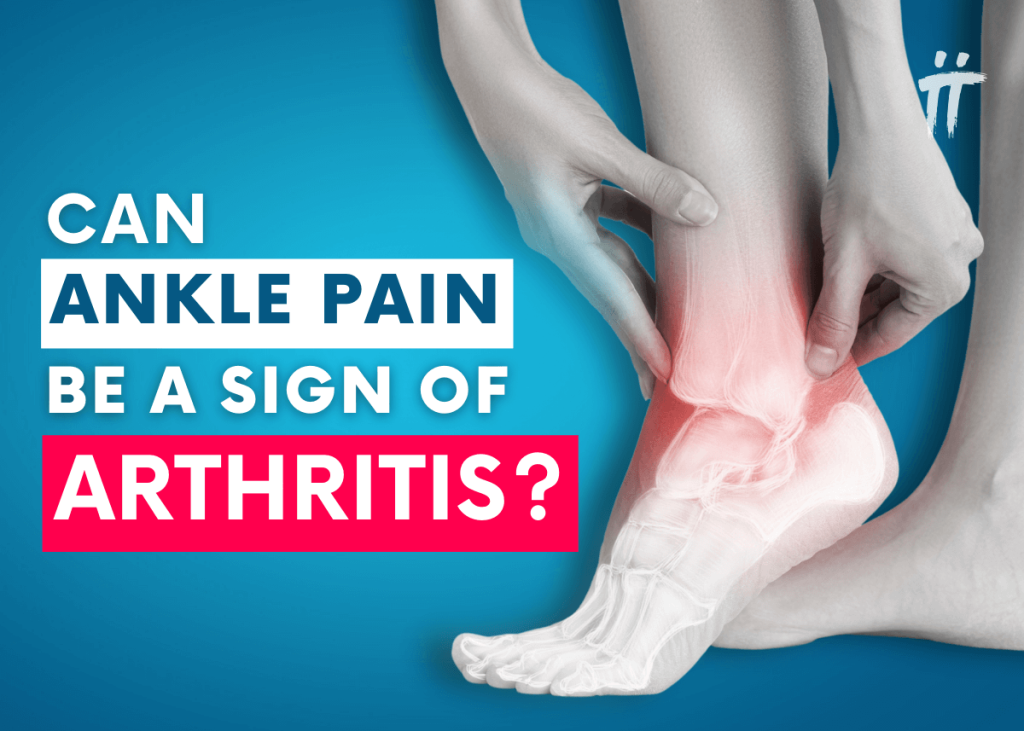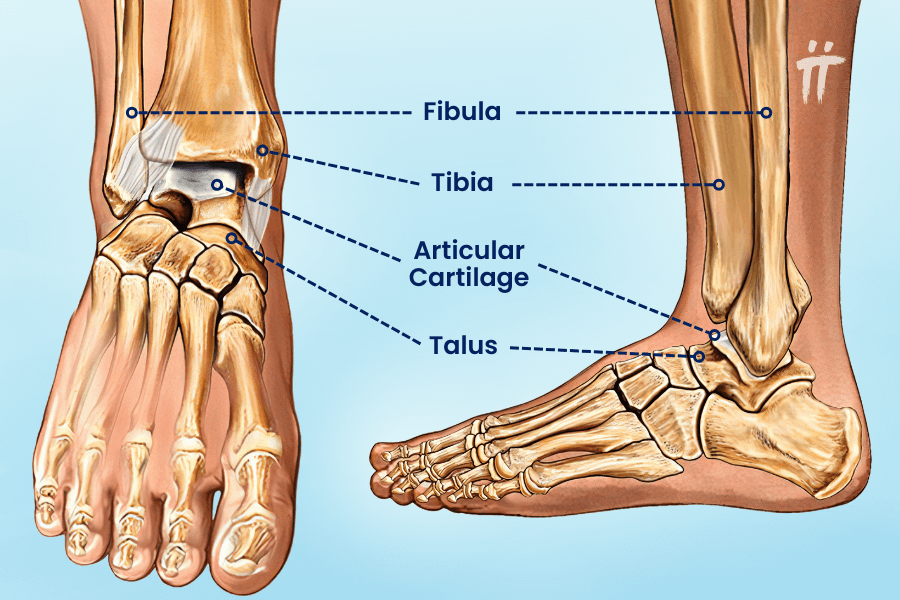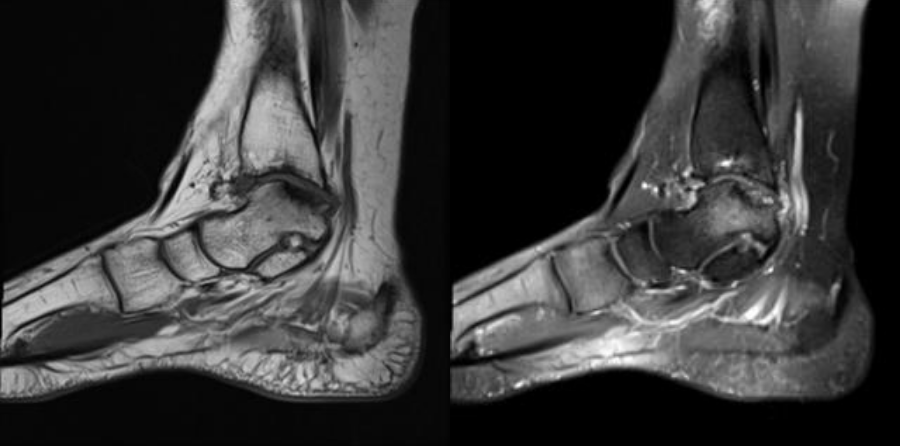
Ankle arthritis can cause ankle pain, swelling, stiffness, limitation of movement and disruption in walking. This affects the daily activities you enjoy. Ankle arthritis is usually the result of a previous injury, such as an ankle fracture or dislocation. However, with the right treatment methods, joint pain can be controlled and you can continue your active life. If you feel pain in your ankle after standing or walking for a long time, don’t neglect to consult an orthopedic doctor considering the symptoms of ankle arthritis.
Table of Contents
- What is Ankle Osteoarthritis?
- What Causes Ankle Osteoarthritis?
- What are the Symptoms of Ankle Osteoarthritis?
- How is Ankle Osteoarthritis Diagnosed?
- What are the Options for Ankle Osteoarthritis Treatment?
- How to Treat Ankle Osteoarthritis and Ankle Pain?
What is Ankle Osteoarthritis?
The ankle joint is formed by the fusion of three bones. The upper part of the talus bone sits in a socket formed by the lower end of the tibia and the fibula (the thin bone of the leg). Articular cartilage is a smooth and slippery tissue that covers the ends of the bones forming the joints (Picture 1).

Articular cartilage acts as a cushion against loads on the joint. Thus, it helps to protect the bone surfaces by absorbing the loads and impacts on the bone ends. However, when the cartilage structure deteriorates, the bones that make up the joint begin to rub against each other and wear out.
Abrasion, on the other hand, causes damage to the bones due to the loads on the bone ends. This results in ankle pain and osteoarthritis (Picture 2.a).

What Causes Ankle Osteoarthritis?
Like the knee and hip joints, ankle joint cartilage also shows wear and tear due to natural aging. This is the most common cause of ankle osteoarthritis. The fact that ankle osteoarthritis is more common in older ages is a result of wear and tear caused by years of use rather than a sedentary lifestyle. Other causes of ankle osteoarthritis are usually the following:
- Rheumatic joint diseases such as gout,
- Damage caused by fractures and dislocations of the ankle,
- Damage to cartilage caused by arthritis in the ankle,
- Avascular necrosis of the talus bone, which is the deterioration of the blood supply to the bone and its decay.
What are the Symptoms of Ankle Osteoarthritis?
The symptoms of ankle osteoarthritis vary from person to person, depending on the cause and severity of the osteoarthritis. In some patients, symptoms may be mild and temporary, while in others they may be severe and persistent.
The most common symptoms of ankle osteoarthritis are as follows;
- Ankle pain,
- Ankle swelling,
- Slight increase in temperature and redness,
- Sensitivity to touch,
- Limitation of ankle movements,
- Increased pain after walking and sports activities,
- Limping when walking, limping,
- It is a deformity that occurs as a result of damage to the bone ends after advanced osteoarthritis.
How is Ankle Osteoarthritis Diagnosed?
In the process of diagnosing ankle osteoarthritis; the patient’s health history is listened to and physical examination is performed. X-rays of the ankle are taken to confirm the diagnosis, the degree of calcification and to plan the treatment method.
In the early period when ankle osteoarthritis is mild in X-rays, X-ray images close to normal can be obtained. In the case of advanced osteoarthritis, X-rays (Picture 2.b);
- Narrowing of the joint space,
- Cysts and whitening of adjacent bones,
- Small bony protrusions called osteophytes,
- Deformities are seen in which the joint structure becomes irregular.
If gout or rheumatic joint diseases that can cause osteoarthritis in the ankle are suspected, blood tests should be performed. In some cases, symptoms similar to “joint infection” may be observed in calcified joints. In this case, an intra-articular fluid sample may need to be tested for infection.
Physical examination, X-rays and blood tests are sufficient to diagnose and treat ankle osteoarthritis. However, in some cases, magnetic resonance imaging (MRI) and computed tomography (CT) may be required to assess the condition of adjacent bones, surrounding soft tissues and tendons.

What are the Options for Ankle Osteoarthritis Treatment?
In the treatment of ankle osteoarthritis, non-surgical treatment methods can be applied to reduce the patient’s complaints and provide relief from ankle pain. However, in cases where non-surgical treatment methods do not yield results, surgical treatment option is applied.
Non-Surgical Treatment Methods for Ankle Osteoarthritis
Non-surgical treatment methods for ankle arthritis should generally be applied in the early stages of ankle pain. During this period, ankle pain only occurs after prolonged standing or long walks. This may require the use of mild painkillers and anti-inflammatory drugs such as paracetamol or ibuprofen. You should also reduce activity or avoid activities that require prolonged standing and walking.
If the person is overweight, weight loss will reduce the load on the joint and the pain during walking may be alleviated. Insoles that support the ankle or reduce the load on it, elastic wristbands that reduce movement in the ankle, crutches and canes are also useful in reducing joint pain.
One of the non-surgical treatment methods for ankle arthritis is intra-articular cortisone injections. Cortisone injection into the joint can provide temporary relief from joint pain. Cortisone is a powerful anti-inflammatory drug. When cortisone is injected into the joint, it helps to relieve pain. The effect can often last for several weeks or months.
Patelet-rich plasma (PRP) injections, known as PRP, are used for the treatment of pain caused by ankle arthritis.l PRP injections, especially in the early stages, can reduce pain and partially slow down the calcification process. However, it should not be forgotten that PRP treatment is not effective in correcting the wear and tear that occurs in the joint.

Pysical therapy and rehabilitation play an important role in the treatment of ankle osteoarthritis. The main goal of physical therapy for ankle osteoarthritis is to help you learn how to control symptoms and maximize the health of your ankle. During the physical therapy process, joint flexibility, balance and muscle strength development exercises are performed in the presence of a physiotherapist.
What is done in ankle osteoarthritis surgery?
If the patient’s complaints persist despite non-surgical treatment methods in ankle osteoarthritis, it is necessary to consider surgical options. Which option would be more suitable for the patient;
- How far the osteoarthritis in the ankle has progressed,
- Activity level and occupation,
- How old you are,
- It is determined according to whether the patient has any concomitant diseases.
Treatment methods of ankle prosthesis surgeries vary as arthroscopic (closed) ankle osteoarthritis surgery, bone correction surgeries to change the load distribution in the joint, ankle freezing surgery and replacement of the joint with an artificial ankle.
Arthroscopic Ankle Osteoarthritis Surgery
In ankle osteoarthritis, loose and detached pieces of articular cartilage or bone fragments move freely inside the ankle joint. These parts irritate the joint and cause pain and swelling in the ankle.
Pains that cause snapping and locking in the joint cause limitation of movement and disruption. In addition, small bone spurs called osteophytes form around the joint and these spurs can grow over time.
Ankle arthroscopy;
- The ankle joint is visualized through two small incisions.
- With the special tools used, free cartilage fragments, osteophytes and excessively thickened joint membrane that cause discomfort in the joint are cleaned by shaving.
- After this procedure, PRP can be applied intra-articularly in suitable patients.
Ankle Bone Correction Surgery
Joint calcification may occur due to a structural problem or deformity in the ankle. Correcting this situation provides relief for the patient’s complaints. It can also delay the need for ankle freezing or ankle prosthesis surgery, as well as being a permanent solution. However, for correction surgery, the patient should have a range of motion close to normal, mild deformity and more than 50% of the articular cartilage should be healthy.
This bone correction surgery (Supramalleolar Osteotomy) performed on the ankle is a bone cutting procedure performed on the tibia (shin bone) of the joint. After cutting, the load is transferred from the side of overload and cartilage damage to the side of the joint with healthy cartilage and no load (Picture 5).

Ankle Freezing Surgery
Ankle osteoarthritis can become so painful that walking becomes difficult. In this case, ankle freezing surgery may be recommended. The surgery provides permanent pain relief and allows the patient to return to daily life activities and sports. In the operation, the damaged articular cartilages of the three bones that make up the ankle joint (talus, tibia and fibula) are cleaned by shaving, and then the bones are brought closer to each other so that they fuse to each other (Picture 6). After this procedure, the ankle is no longer able to move. Most people who have had a successful ankle freezing surgery can walk without limping or limping. However, running may be difficult due to reduced flexibility of the ankle.

Some changes in shoes are needed after ankle freezing surgery. Since the ankle no longer moves, when we take a step, the normal rolling motion of the foot in contact with the ground is absent. For this reason, “rocker sole” shoes, where the sole is like a boat, should be preferred. With this shoe, instead of the ankle, the “rocker sole shoe” provides the rolling on the ground.
Ankle freezing surgery is a particularly suitable option for young and active people. In addition, there is no need for another surgery unless there are any problems afterwards.
Ankle Replacement Surgery
Ankle replacement surgery is a treatment in which damaged bone and cartilage parts of the joint are removed and replaced with prostheses. Total ankle prosthesis consists of three different parts. A titanium metal component is placed in the tibia, a cobalt-chrome component is placed in the talus and a polyethylene (plastic) component is placed between the two (Picture 7).

Much research has been done to perfect an artificial ankle prosthesis. However, so far, ankle prosthesis surgeries have not been as successful as hip or knee replacement surgery.
The ankle joint is a difficult joint to replace for many reasons. The biggest problem with older ankle prosthesis designs is that they loosen after a short time and cause ankle pain. However, in newer ankle prosthesis designs, the tibia and fibula are fused together to solve this problem. The use of new designs significantly increases the success rate of ankle prosthesis surgeries performed today.
How to Treat Ankle Osteoarthritis and Ankle Pain?
In ankle arthritis, as with other joint arthritis, surgical and non-surgical treatments, as well as methods you can apply at home, can help you manage the pain. Exercises you can do at home and lifestyle changes are examples of these methods.
Another method that is good for ankle osteoarthritis is hot and cold application, which is effective in relieving pain and swelling. While applying heat to the joint area in pain caused by osteoarthritis is beneficial for joint stiffness; cold compress is effective in reducing joint pain and inflammation.
This can be done using a hot or cold towel. If you have ankle arthritis, choosing the right and comfortable shoes is also an important factor. For this reason, it is important to choose shoes that adapt to your feet and are supported and flexible enough to feel comfortable. In addition, maintaining your overall health through a balanced diet and avoiding excess weight helps to reduce the stress and strain on the joints.

Exercise is one of the most important methods to cure ankle osteoarthritis. With regular and light exercises, you can control your weight and improve your range of motion by strengthening the muscles in your ankle.
If you are also experiencing ankle pain, you can share your questions with us on our social media accounts and contact us to get information about ankle osteoarthritis diagnosis and treatment methods.









Leave a Comment